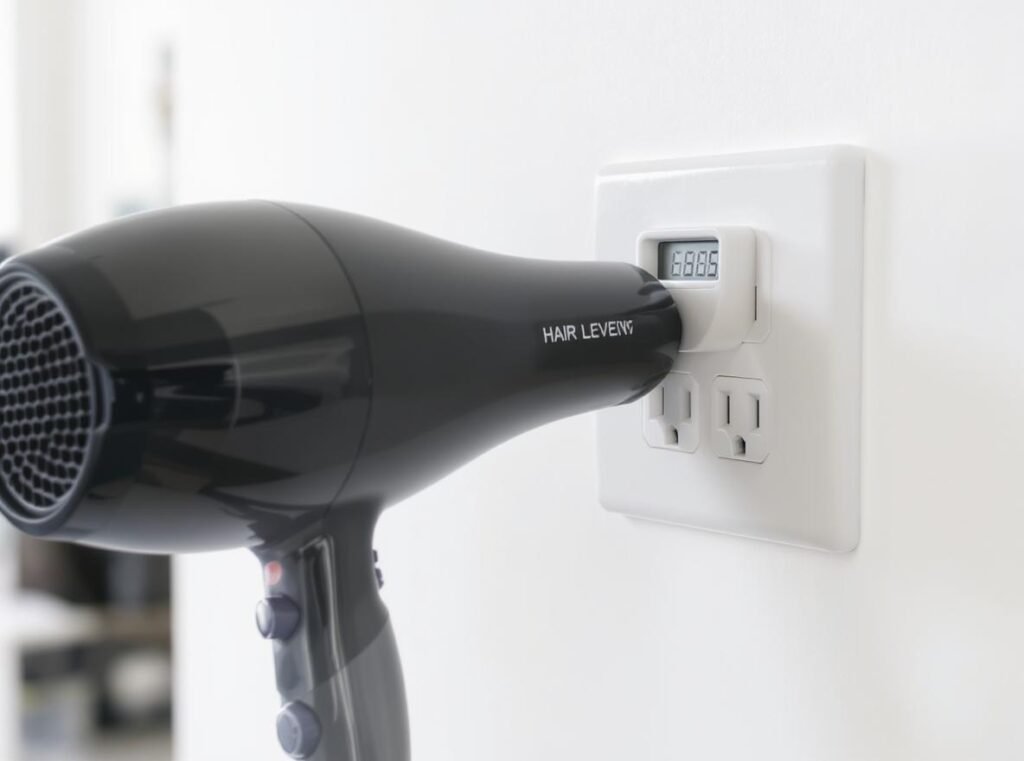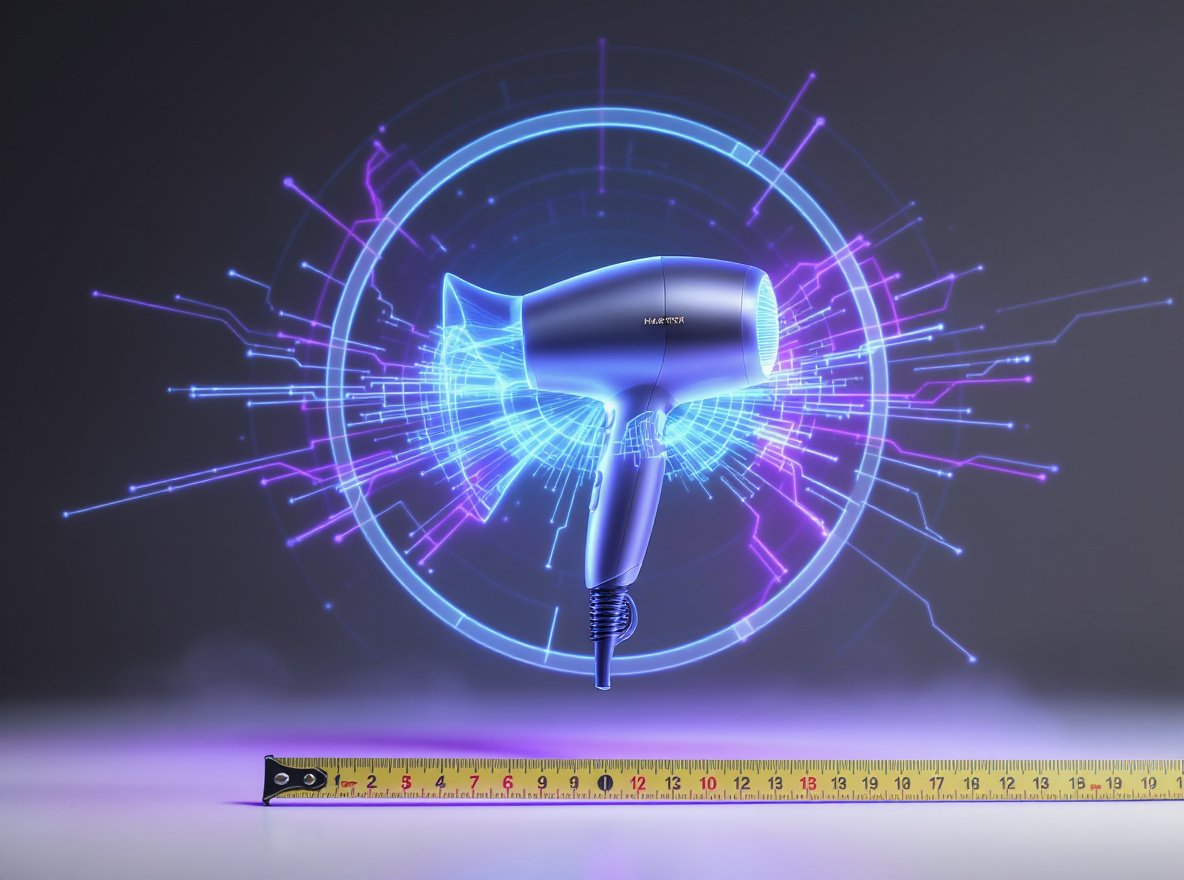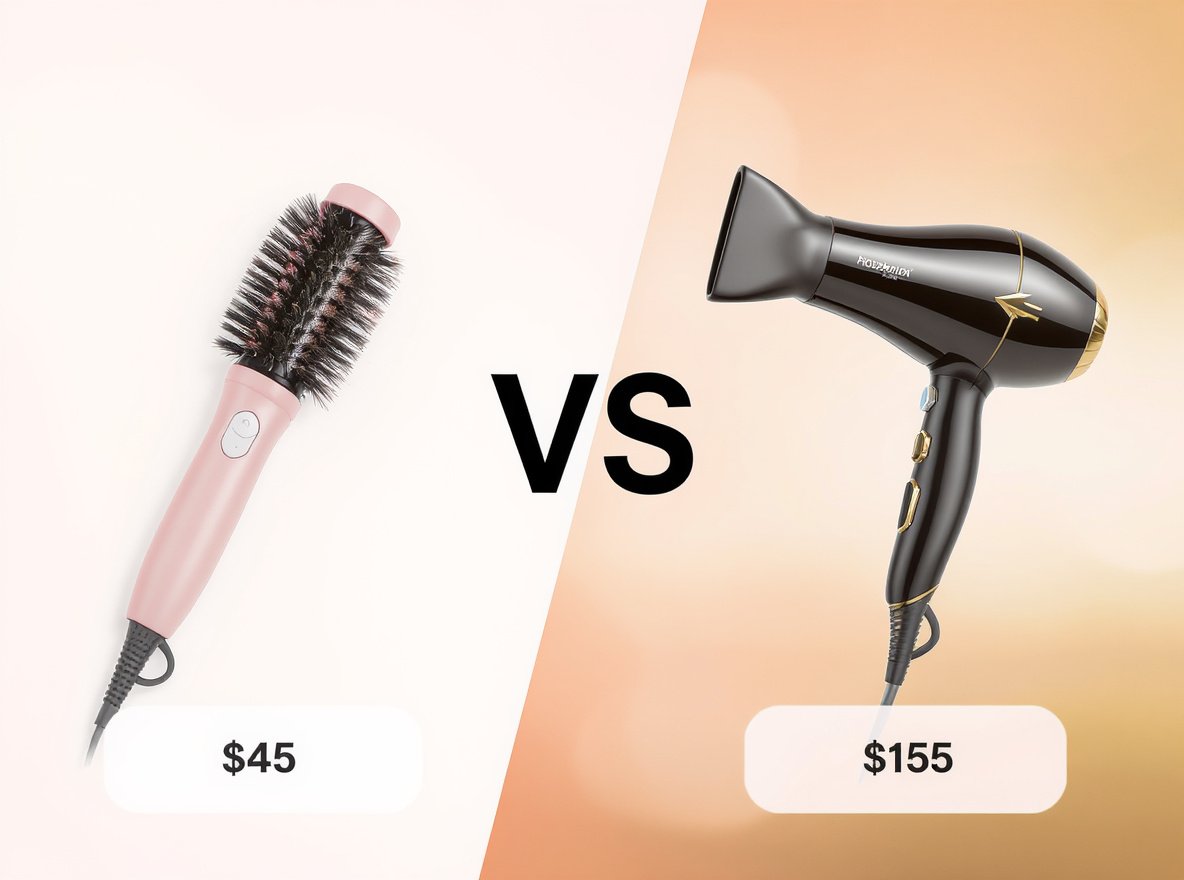Whether you’re stocking hair dryers for your retail store or managing electrical requirements for salon equipment, understanding amperage draw is crucial for safety and performance. Most business owners underestimate how much power these devices actually consume, leading to circuit overloads and potential hazards.
A standard hair dryer typically draws between 10-15 amps from a household outlet, with most models consuming around 12.5 amps at full power. High-end professional units can draw up to 15.6 amps, requiring proper circuit planning to operate safely.
Understanding these electrical requirements helps you make informed decisions about product selection, installation needs, and customer education.
Table of Contents
ToggleWhat Determines How Many Amps a Hair Dryer Uses?
Hair dryer amperage depends on several key factors that directly impact performance and electrical requirements.
Hair dryer amperage is determined by wattage rating, motor type, heating element design, and speed/heat settings. Higher wattage models with powerful motors and multiple heating elements naturally draw more current from the outlet.
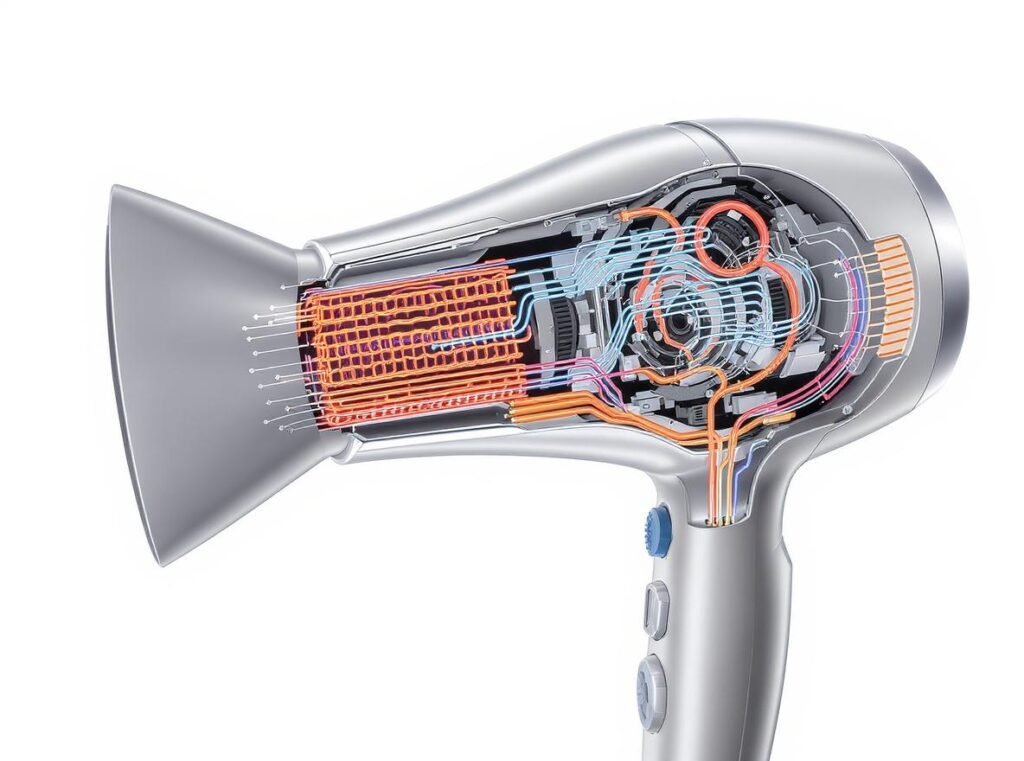
The relationship between watts and amps follows a simple formula: Amps = Watts ÷ Volts. Since most outlets provide 120 volts in North America, a 1500-watt hair dryer draws approximately 12.5 amps.
Motor efficiency plays a significant role in amperage consumption. Traditional AC motors are less efficient than newer brushless DC motors, requiring more current to produce the same airflow. Professional-grade motors with higher torque capabilities also increase amperage draw.
The heat and speed settings dramatically affect power consumption. Studies show that hair dryers use varying amounts of power depending on their settings:
- Low air, low heat: 66 watts (0.55 amps)
- Low air, high heat: 622 watts (5.2 amps)
- High air, high heat: 1,239 watts (10.3 amps)
| Hair Dryer Type | Typical Wattage | Amperage Draw | Circuit Requirement |
|---|---|---|---|
| Low-power models | 800-1200W | 6.7-10 amps | Standard 15-amp circuit |
| Mid-range models | 1200-1500W | 10-12.5 amps | Standard 15-amp circuit |
| High-power/Professional | 1500-1875W | 12.5-15.6 amps | 20-amp circuit recommended |
Age and condition also affect amperage consumption. Older hair dryers or those with clogged air filters may draw more current as they work harder to maintain performance.
Why Do Different Hair Dryers Have Different Amp Requirements?
Understanding amperage variations helps retailers and distributors choose appropriate products for different market segments.
Different hair dryers have varying amp requirements due to differences in wattage ratings, motor technologies, heating element configurations, and intended use cases. Professional models require more power to deliver superior performance and durability.
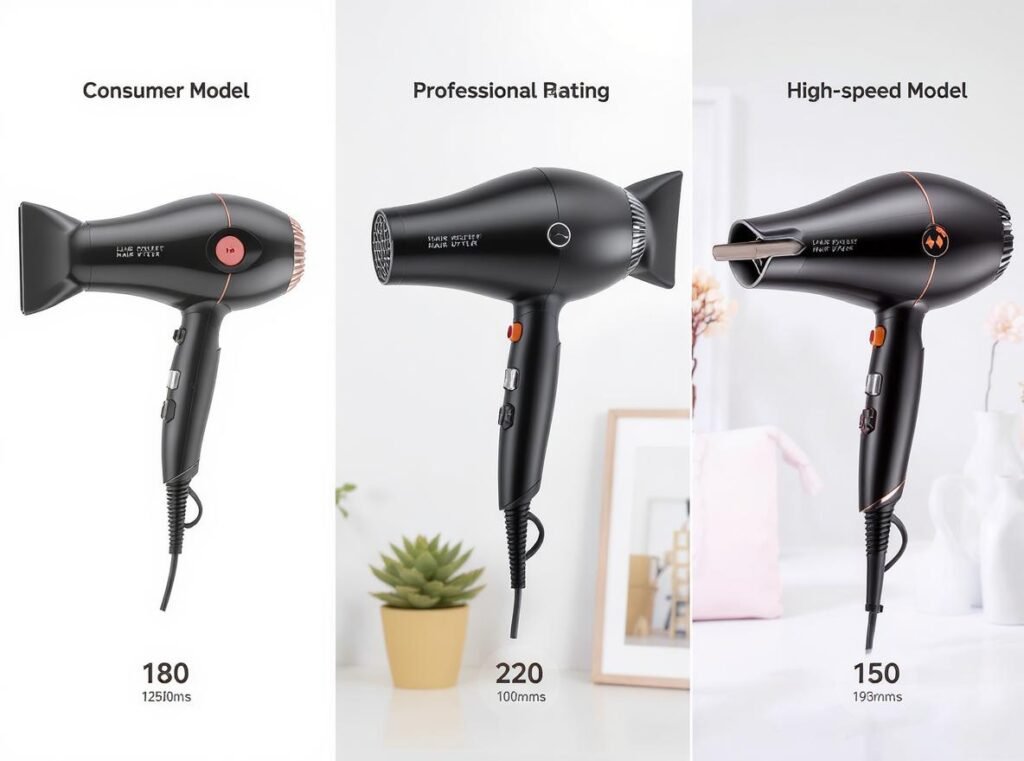
Consumer-grade hair dryers typically range from 800-1500 watts, translating to 6.7-12.5 amps. These models balance performance with electrical compatibility, ensuring they work on standard household circuits without tripping breakers.
Professional and salon-grade units often reach 1875 watts, requiring 15.6 amps. These high-amperage models deliver faster drying times and better styling results, justifying their higher electrical demands for commercial use.
Motor technology significantly impacts amperage requirements. Traditional AC motors convert electrical energy less efficiently, requiring higher amperage for equivalent performance. Modern brushless DC motors offer better power-to-performance ratios, achieving professional results with more reasonable electrical demands.
Heating element design also affects power consumption. Ceramic and tourmaline elements often require less amperage than traditional metal coils while providing superior heat distribution and hair protection.
The Conason P1C high-speed hair dryer exemplifies efficient design principles, delivering professional performance while maintaining electrical compatibility with standard household circuits.
How to Calculate Hair Dryer Amperage from Wattage?
Calculating amperage helps retailers educate customers about electrical requirements and compatibility.
To calculate hair dryer amperage, use Ohm’s Law: Amps = Watts ÷ Volts. For standard 120V outlets, a 1500W hair dryer draws 12.5 amps (1500 ÷ 120 = 12.5).
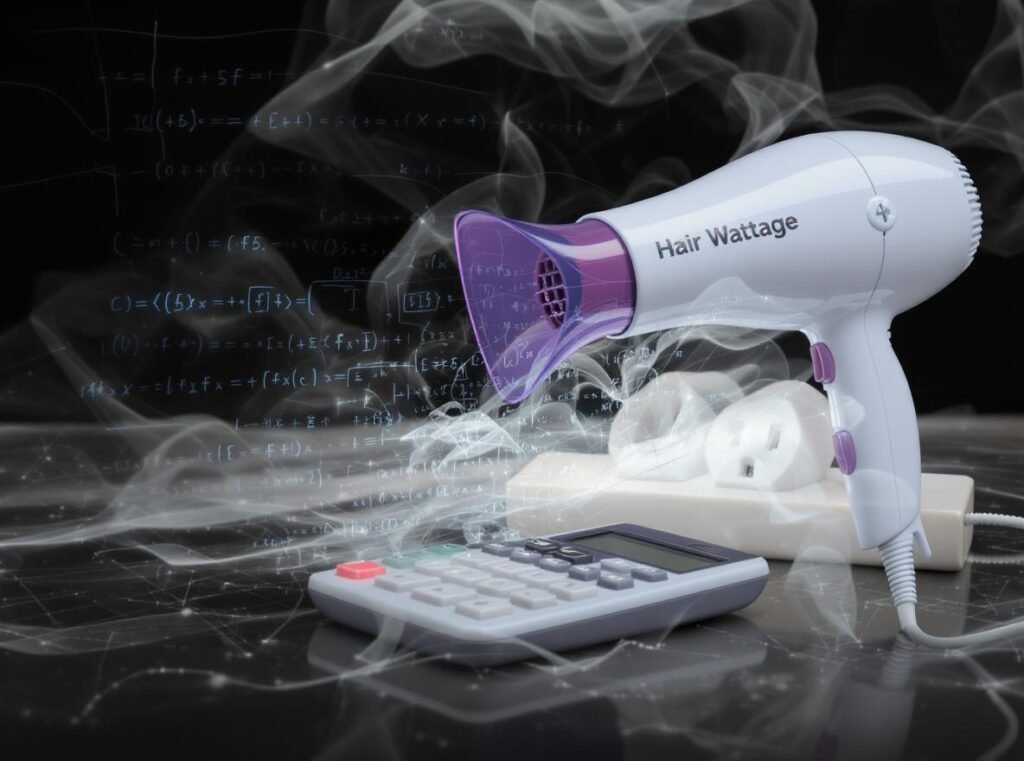
This calculation provides theoretical amperage, but real-world consumption may vary slightly due to power factor and motor characteristics. Most manufacturers provide actual amperage ratings on product labels for accuracy.
Practical calculation examples:
| Wattage | Calculation | Amperage Draw |
|---|---|---|
| 800W | 800 ÷ 120 | 6.7 amps |
| 1200W | 1200 ÷ 120 | 10.0 amps |
| 1500W | 1500 ÷ 120 | 12.5 amps |
| 1875W | 1875 ÷ 120 | 15.6 amps |
Understanding these calculations helps you select appropriate hair dryers for different electrical systems, educate customers about circuit requirements, and avoid compatibility issues that lead to returns or safety concerns.
Most hair dryers display their wattage rating on the side or back of the unit, making amperage calculation straightforward. Always verify manufacturer specifications rather than relying solely on calculations, as actual performance may differ from theoretical values.
What Circuit Breaker Size Do You Need for Hair Dryers?
Circuit breaker sizing ensures safe operation and prevents electrical hazards in homes and salons.
Most hair dryers up to 1200 watts operate safely on standard 15-amp circuits, but models 1500 watts and above require 20-amp circuits. The National Electrical Code mandates 20-amp dedicated circuits for bathroom outlets in homes built after 1996.
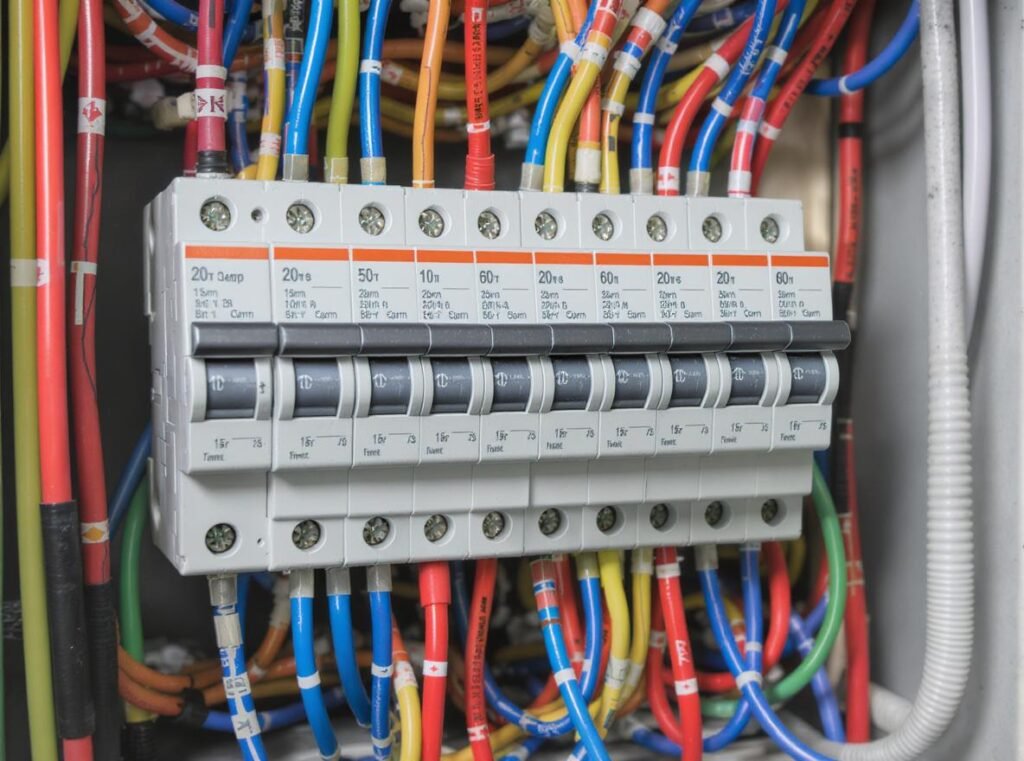
Standard residential circuits are typically 15 or 20 amps. The electrical code recommends that continuous loads shouldn’t exceed 80% of circuit capacity, providing safety margins for reliable operation.
Circuit capacity guidelines:
For 15-amp circuits:
- Maximum safe capacity: 1,800 watts (15 amps × 120 volts)
- Recommended continuous load: 1,440 watts (80% of capacity)
- Suitable for hair dryers up to 1200 watts
For 20-amp circuits:
- Maximum safe capacity: 2,400 watts (20 amps × 120 volts)
- Recommended continuous load: 1,920 watts (80% of capacity)
- Required for hair dryers 1500 watts and above
Most bathrooms in homes built before the 1990s have 15-amp circuits, which can be pushed to their limits by modern high-wattage hair dryers. This explains why hair dryers frequently trip circuit breakers in older homes.
Professional salons typically install dedicated 20-amp circuits for each styling station to ensure reliable operation of high-performance equipment without interference from other devices.
Can You Use Multiple Hair Dryers on One Circuit?
Understanding circuit capacity helps businesses plan electrical installations for salons and retail demonstrations.
Using multiple hair dryers on one circuit is strongly discouraged and potentially dangerous. A single 1875-watt hair dryer already draws 15.6 amps, and adding another would exceed even a 20-amp circuit’s capacity.
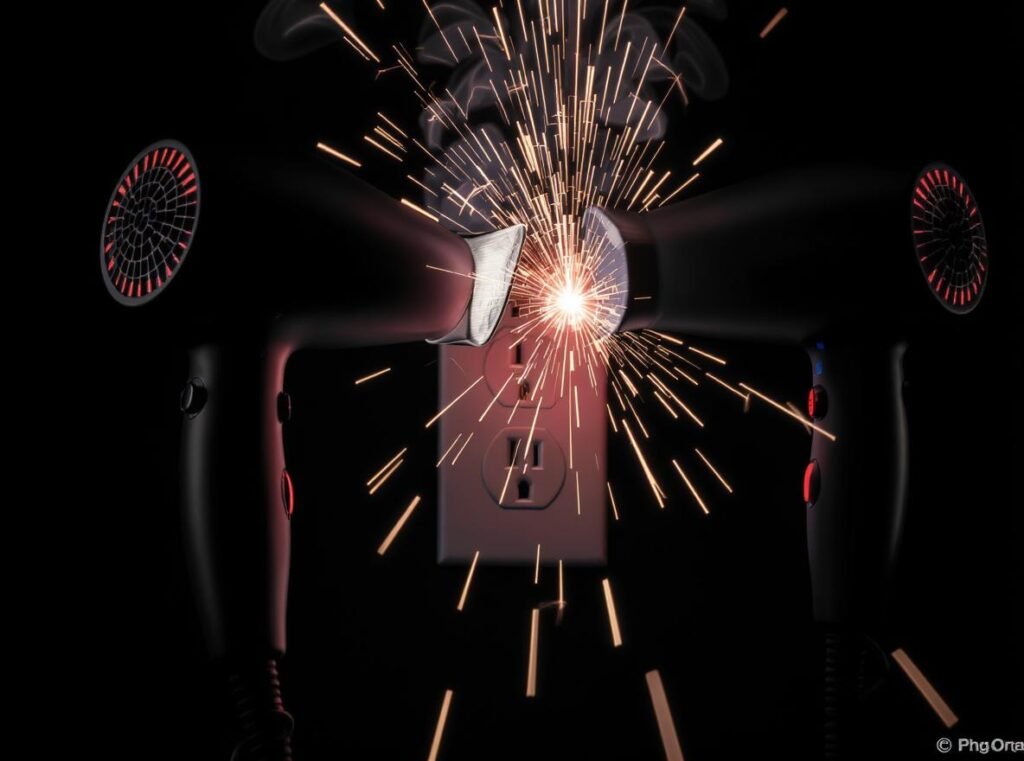
Professional electricians recommend never connecting multiple high-power appliances to the same circuit, as this creates immediate overload conditions that will trip circuit breakers and potentially cause fire hazards.
Safe single-dryer configurations by circuit type:
| Circuit Size | Maximum Capacity | Safe Hair Dryer Wattage |
|---|---|---|
| 15-amp | 1,800 watts | Up to 1,200 watts |
| 20-amp | 2,400 watts | Up to 1,875 watts |
Multiple hair dryer considerations for salons:
- Install individual 20-amp circuits for each styling station
- Account for startup surge current that temporarily exceeds running amperage
- Consider other equipment sharing circuits (lighting, mirrors, styling tools)
- Plan for peak usage times when multiple stations operate simultaneously
This approach costs more initially but prevents service interruptions, equipment damage, and safety hazards. For businesses stocking hair dryers, understanding these limitations helps customers choose appropriate models and avoid electrical compatibility problems.
What Happens When a Hair Dryer Draws Too Many Amps?
Understanding overcurrent scenarios helps prevent electrical problems and equipment damage.
When a hair dryer draws too many amps, circuit breakers automatically trip to prevent overheating and fire hazards. This safety mechanism protects electrical systems but indicates that the circuit is inadequate for the device’s power requirements.
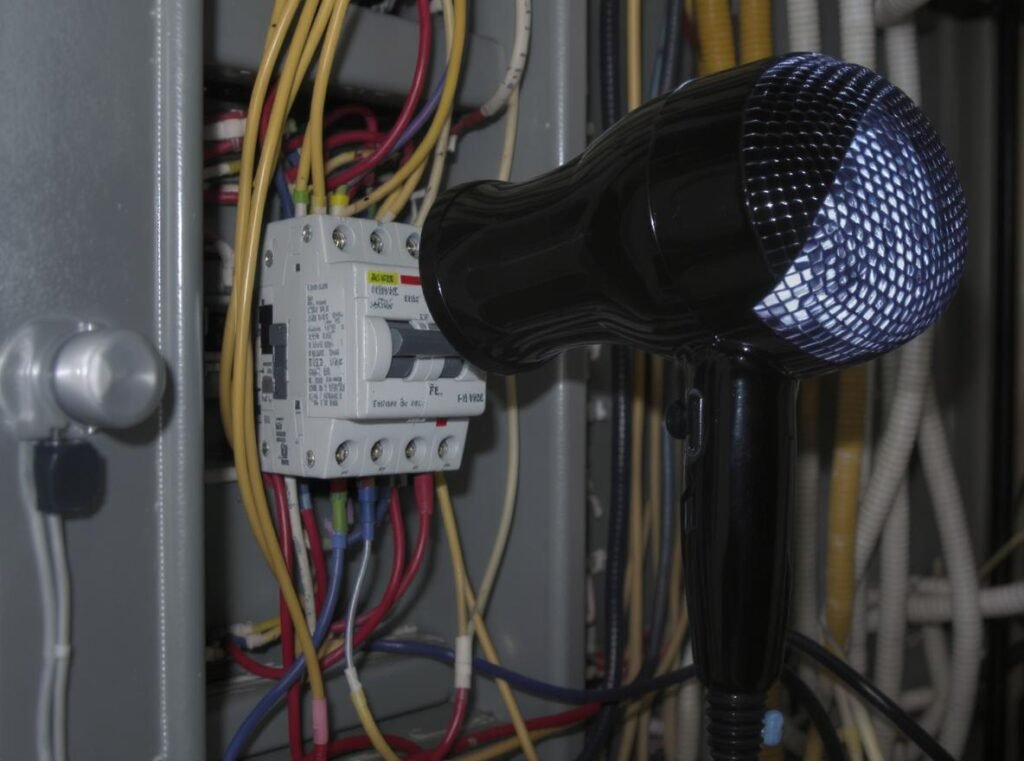
Circuit breakers are designed to interrupt current flow when amperage exceeds safe levels. This protection prevents wire overheating, which could cause electrical fires or damage to building wiring systems.
Common overcurrent scenarios include:
- Using high-wattage hair dryers on inadequate 15-amp circuits
- Operating multiple devices simultaneously on shared circuits
- Aging electrical systems with reduced capacity
- Faulty wiring or connections increasing electrical resistance
Warning signs of overcurrent problems:
- Frequent circuit breaker trips when using the hair dryer
- Dimming lights when the device starts up
- Warm or discolored outlets and plugs
- Burning smells from electrical components
- Reduced hair dryer performance and airflow
Long-term effects of repeated overcurrent conditions include wire insulation breakdown, outlet damage, and premature equipment failure. These problems create fire hazards and expensive repair costs that far exceed the investment in proper electrical infrastructure.
Prevention involves proper electrical assessment, appropriate circuit sizing, and selecting hair dryers compatible with existing systems.
How Do High-Speed Hair Dryers Compare in Amp Usage?
Modern high-speed hair dryers offer improved efficiency and performance characteristics affecting amperage consumption.
High-speed hair dryers typically use advanced brushless motors that provide superior performance while maintaining comparable amperage draw to traditional models. These efficient designs deliver faster drying with optimal electrical consumption.
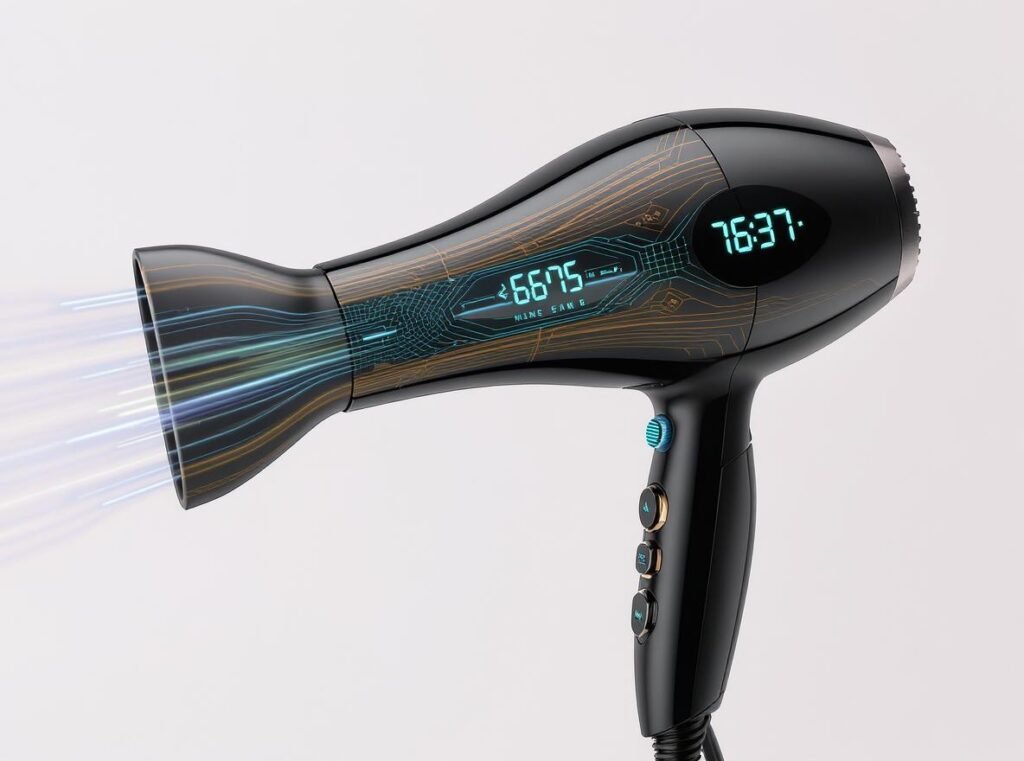
Traditional hair dryers rely on less efficient motor technology, requiring higher amperage for equivalent performance. Modern high-speed models achieve better power-to-performance ratios through advanced engineering and materials.
High-speed hair dryer amperage comparison:
| Hair Dryer Type | Typical Wattage | Amperage Draw | Performance Benefits |
|---|---|---|---|
| Traditional models | 1200-1875W | 10-15.6 amps | Standard airflow |
| High-speed models | 1400-1600W | 11.7-13.3 amps | Faster drying, less heat damage |
| Professional high-speed | 1600-2000W | 13.3-16.7 amps | Superior performance, durability |
Advanced motor technologies in high-speed models include:
- Brushless DC motors with improved efficiency
- Digitally controlled airflow for consistent performance
- Optimized impeller designs for maximum airflow
- Intelligent heat management systems
The Conason P1C high-speed hair dryer demonstrates these efficiency improvements, providing professional-grade performance while maintaining reasonable electrical requirements suitable for standard household circuits.
High-speed models offer additional advantages beyond amperage efficiency, including faster drying times that reduce overall energy consumption, better heat distribution that prevents damage, and improved user experience through reduced noise levels.
Safety Considerations for Hair Dryer Amperage
Electrical safety requirements ensure proper installation and operation of hair dryers in various environments.
Hair dryer safety depends on proper circuit sizing, GFCI protection, appropriate outlet types, and regular maintenance. High-amperage models require careful electrical planning to prevent hazards and ensure reliable operation.
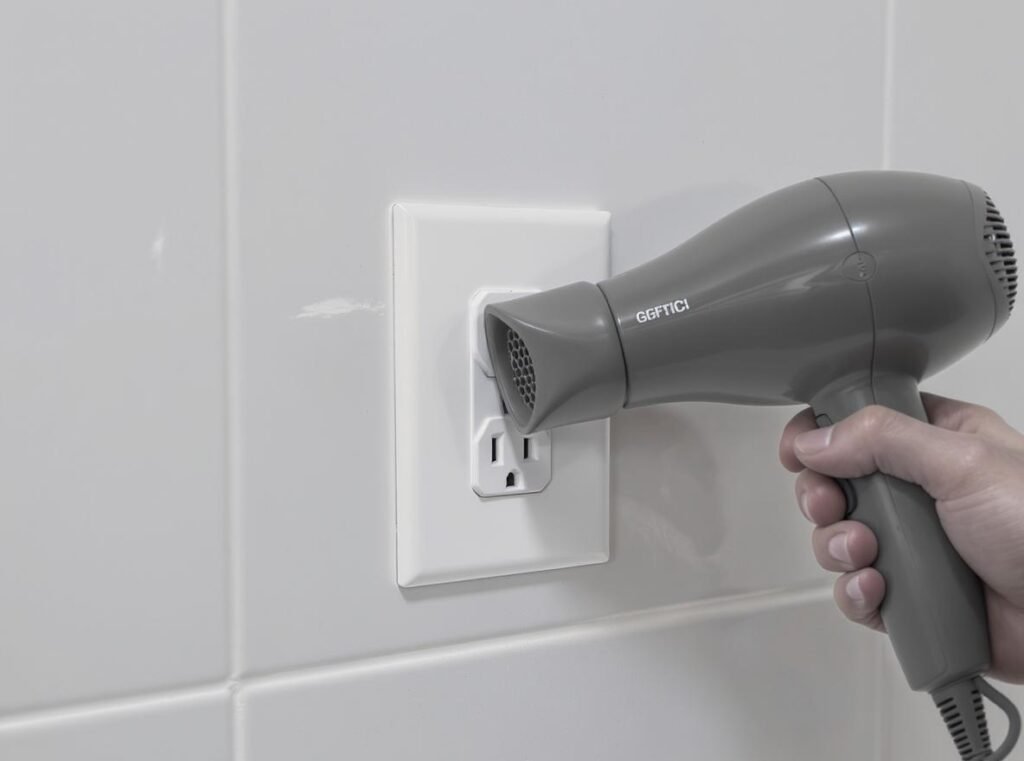
Ground Fault Circuit Interrupter (GFCI) protection is mandatory for all hair dryers manufactured since 1991, either built into the device or provided through GFCI outlets. This protection prevents electrocution if the device contacts water or experiences ground faults.
Essential safety requirements include:
Electrical safety measures:
- Proper grounding with three-prong plugs and grounded outlets
- GFCI protection required in wet locations like bathrooms
- Adequate circuit capacity for device amperage requirements
- Appropriate wire sizing matching circuit breaker ratings
Usage safety guidelines:
- Never use near water sources like bathtubs or sinks
- Unplug immediately after use to prevent accidental activation
- Keep air vents clear to prevent overheating and excessive amperage draw
- Plug directly into wall outlets rather than extension cords
- Avoid using surge protectors, as they’re not designed for high-amperage devices
Professional installation considerations:
- Dedicated circuits for high-amperage models
- Code-compliant electrical connections and junction boxes
- Regular inspection of cords, plugs, and outlets for damage
- Proper ventilation around electrical components
Turn off other high-power devices when using hair dryers to prevent circuit overloading. Have an electrician evaluate your electrical system if breakers trip frequently, as this indicates inadequate capacity for modern appliances.
Summary
Understanding hair dryer amperage is essential for safe operation and proper electrical planning. Standard models draw 10-15 amps, with professional units requiring up to 15.6 amps and dedicated 20-amp circuits. Proper circuit sizing, GFCI protection, and electrical compatibility prevent hazards while ensuring reliable performance for both residential and commercial applications.
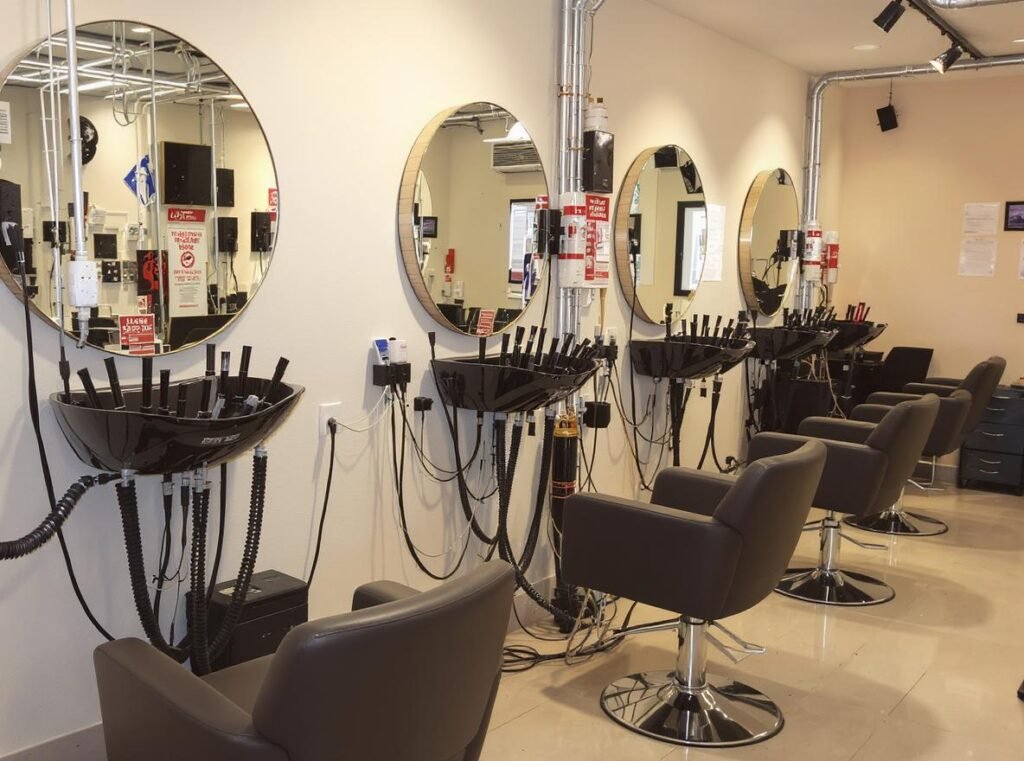
Ready to stock high-quality hair dryers with optimal amperage efficiency? Browse our complete product collection or contact us for wholesale pricing and technical specifications. Our team helps you select the right models for your customers’ electrical systems and performance requirements, ensuring safe operation and customer satisfaction.

